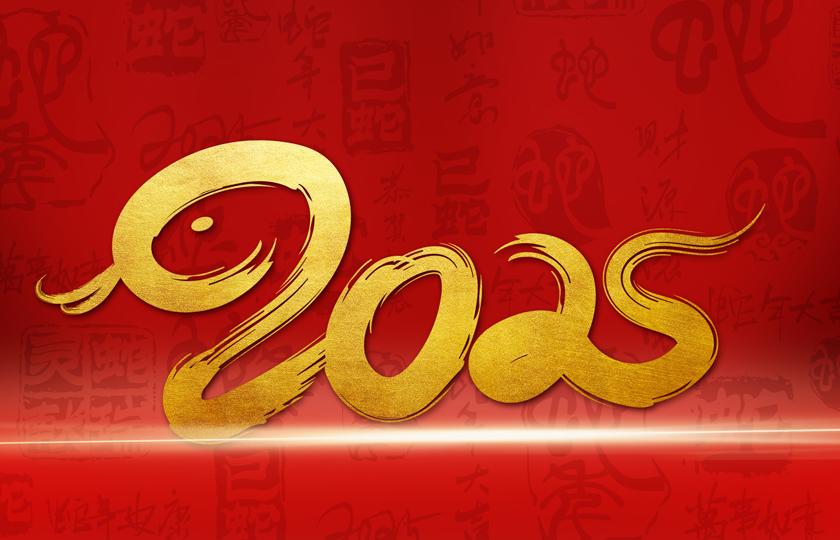Is 2025 a Leap Year? Find Out What Makes a Year "Leap"!

Time flies like a white horse passing through a gap. In a twinkling of an eye, we are about to welcome a new year - 2025. According to the calculation method of the sexagenary cycle, 2024 is the year of Jia Chen, and 2025 is the year of Yi Si. Is 2025 a leap year?
2025 is not a leap year
To determine whether a year is a leap year, the following rules should be followed:
If the year is divisible by 4 and not divisible by 100, it is a leap year.
If the year is divisible by 400, it is also a leap year.
In other cases, it is not a leap year.
After calculation, 2025 is not a leap year.
But 2025 is a leap June and a double spring year
From the Gregorian calendar perspective, 2025 is a common year with a total of 365 days.
But from the lunar calendar perspective, 2025 is the year of Yi Si (the year of the snake), and it is a leap June. Therefore, from January 29, 2025 to February 16, 2026, the lunar year has a total of 384 days.
In 2025, the lunar June is divided into two parts: the first June is from June 23 to July 23, 2025, and the second June is from July 25 to August 22, 2025.
In addition, since the year of Yi Si in 2025 has a solar term of Beginning of Spring on the sixth day of the first lunar month (February 3, 2025) and the seventeenth day of the twelfth lunar month (February 4, 2026), it is also called a "double spring year."
The year 2025 is extraordinary
2025 is the year of Yi Si in the snake zodiac. In Yi Si, Yi is the heavenly stem, symbolizing spring. Its colors are cyan and green. Si in the earthly branches corresponds to the snake in the twelve Chinese zodiac signs. Therefore, the year of Yi Si is not only the year of the green snake but also has the reputation of being the "little green dragon" year.
In traditional Chinese culture, dragons and snakes are often regarded as mysterious and auspicious symbols. The arrival of the year of Yi Si undoubtedly indicates new hopes and opportunities.
Yi belongs to wood. In the five elements, wood represents vitality and growth, which echoes the revival and vitality of all things in spring. And cyan, as the representative color of wood, adds a touch of freshness and vitality.
The year 2025 is not only a year full of hopes but also a year full of vitality.

What does leap year mean?
The definition of a leap year is established to make up for the time difference between the number of days in a year stipulated by the artificial calendar and the actual revolution period of the earth.
The judgment rule for a leap year in the Gregorian calendar is: years divisible by 4 but not divisible by 100 are ordinary leap years; years divisible by 400 are century leap years.
A leap year in the Gregorian calendar has 366 days, one more day than a common year. This day is added to February, making it 29 days.
Which year is leap year?
Here are some examples of leap years:
2000: This is a century leap year because it is divisible by 400.
2004: This is an ordinary leap year because it is divisible by 4 but not by 100.
2008: It is also an ordinary leap year and meets the condition of being divisible by 4.
2012: This is also an ordinary leap year.
2016: Meeting the condition of being divisible by 4, so it is a leap year.
2024: Divisible by 4 and not divisible by 100, so it is a leap year.
In addition, according to the rules of leap years, some future leap years include:
2028: Also meeting the condition of being divisible by 4, it is a leap year.
2032: It is also a year divisible by 4, so it is a leap year.
It should be noted that not all years divisible by 4 are leap years. For example, although 1900 is divisible by 4, since it is also divisible by 100 and not divisible by 400, it is not a leap year. Similarly, 2100 will also not be a leap year because although it is divisible by 4, it is also divisible by 100 and not divisible by 400.
What are the differences between leap years and common years?
The main differences between leap years and common years lie in the number of days and the number of days in February, as well as their determination rules. Here is a specific introduction:
Definitions of leap years and common years
Leap year: A year has 366 days and February has 29 days. The setting of leap years is to make up for the difference between the earth's revolution period around the sun (about 365.24 days) and the calendar year.
Common year: A year has 365 days and February has 28 days.
Determination rules for leap years and common years
Ordinary leap year: A Gregorian calendar year is a multiple of 4 and not a multiple of 100.
Century leap year: A Gregorian calendar year that is a multiple of 100 must be a multiple of 400.
Difference in the number of days between leap years and common years
Leap year: A year has 366 days.
Common year: A year has 365 days.
Practical applications of leap years and common years
Calendar adjustment: The setting of leap years is to keep the seasons in sync with the calendar.
Agricultural activities: Farmers adjust sowing and harvesting times according to the changes in leap years to ensure that the growth cycle of crops matches the natural seasons.

Which is more common, leap year or common year?
Common years are more common than leap years.
The occurrence frequencies of leap years and common years are as follows:
One leap year every four years: Under normal circumstances, there will be a leap year in every four years.
No leap year in every hundred years: In whole-century years, only those divisible by 400 are leap years, which means there will be 97 common years in every 100 years.
Leap year again every four hundred years: To more accurately adjust the difference between the calendar and the earth's revolution period, it is stipulated that three leap years should be reduced in every 400 years.
In conclusion, common years are more common than leap years because there will be 97 common years in every 100 years, while there are only three leap years. This setting is to keep the calendar in sync with the earth's revolution period.
What is a leap month?
A leap month is a way of intercalation in the calendar. In the lunar calendar (lunisolar calendar), in order to coordinate the contradiction between the tropical year and the lunar year and prevent the lunar months and years from not matching the seasons, a leap month is set.
The lunar calendar uses the moon's revolution around the earth to determine the calendar. Twelve lunar months are one year, which is about 29.53 days × 12 = 354.36 days. And a tropical year is about 365.24 days, with a difference of about 11 days. So a leap month needs to be added every two or three years to make up for this time difference.
What is the difference between leap year and leap month?
Belonging to different calendars
Leap year: It is a concept in the Gregorian calendar (Gregorian calendar), used to make up for the time difference between the artificially stipulated calendar and the actual revolution period of the earth.
Leap month: It is a concept in the Chinese lunar calendar, used to adjust the cycle difference between the lunar calendar and the solar year to ensure that the lunar year is consistent with seasonal changes.
Different setting purposes
Leap year: By adding one day (i.e., February 29) in a specific year, the average length of the Gregorian calendar year is close to the earth's revolution period, thus maintaining the consistency of the calendar and the astronomical cycle.
Leap month: By adding a month (i.e., leap month) in a specific year, the length of the lunar year is made consistent with the solar year to prevent the lunar months and years from being out of step with the tropical year and the four seasons.
Different occurrence frequencies
Leap year: In the Gregorian calendar, there is a leap year every four years, but a leap year will be skipped every hundred years unless the year is divisible by 400.
Leap month: In the lunar calendar, the setting of leap months is not fixed but is determined according to the changes of the twenty-four solar terms and the lunar months. Usually, there are seven leap months in every 19 years, but which year has a leap month and which month is the leap month all need to be calculated according to the rules of the lunar calendar.























